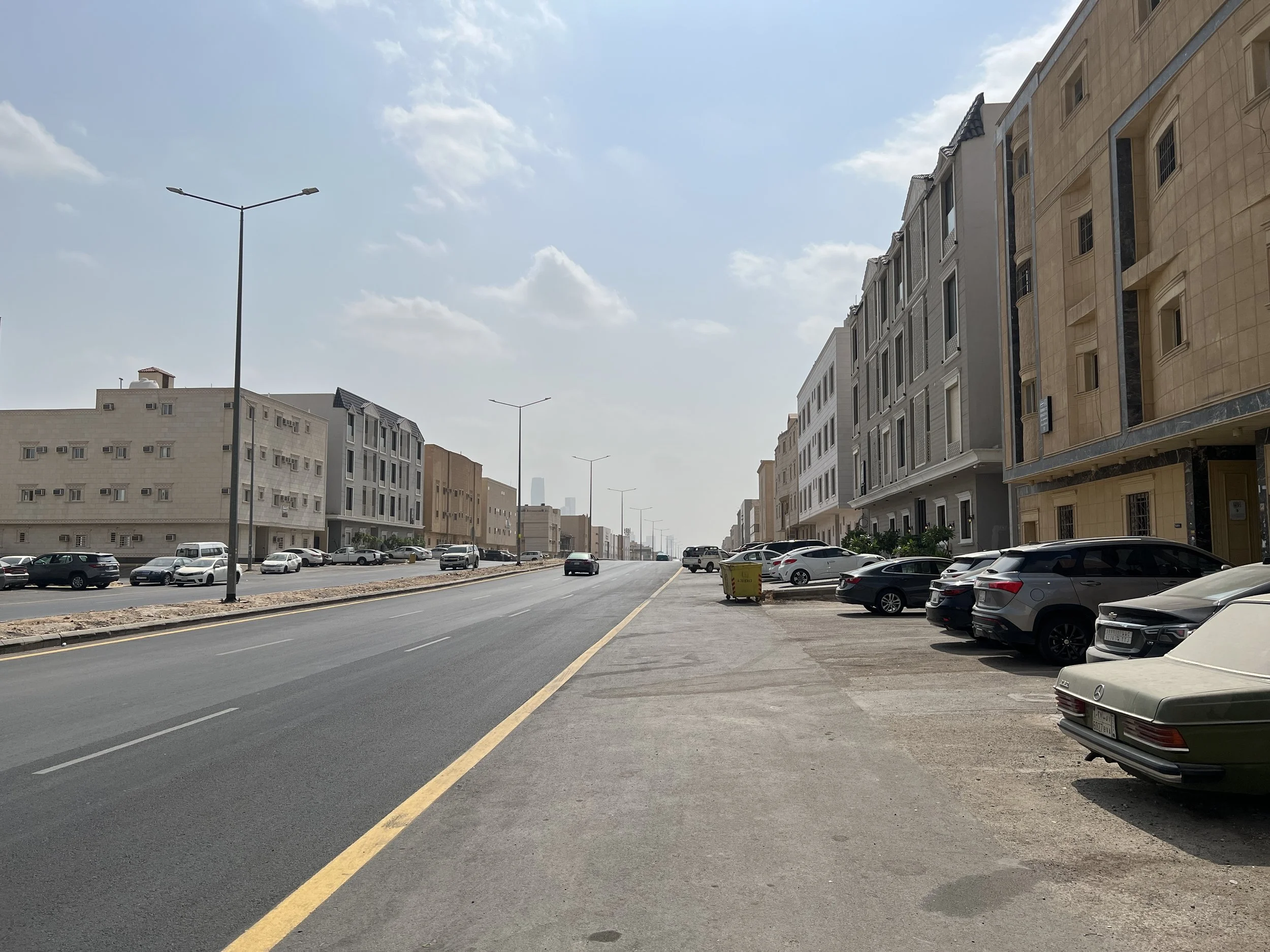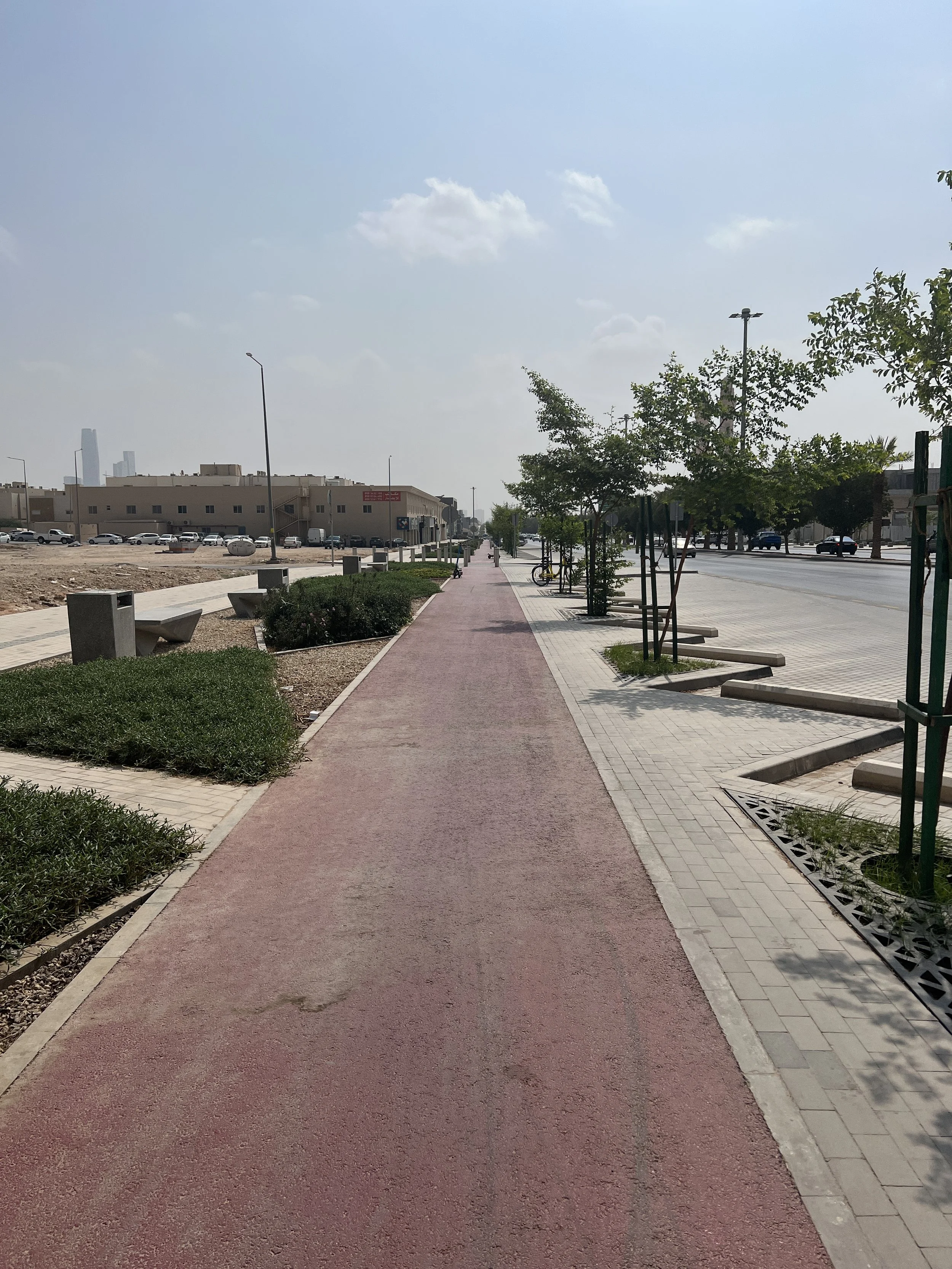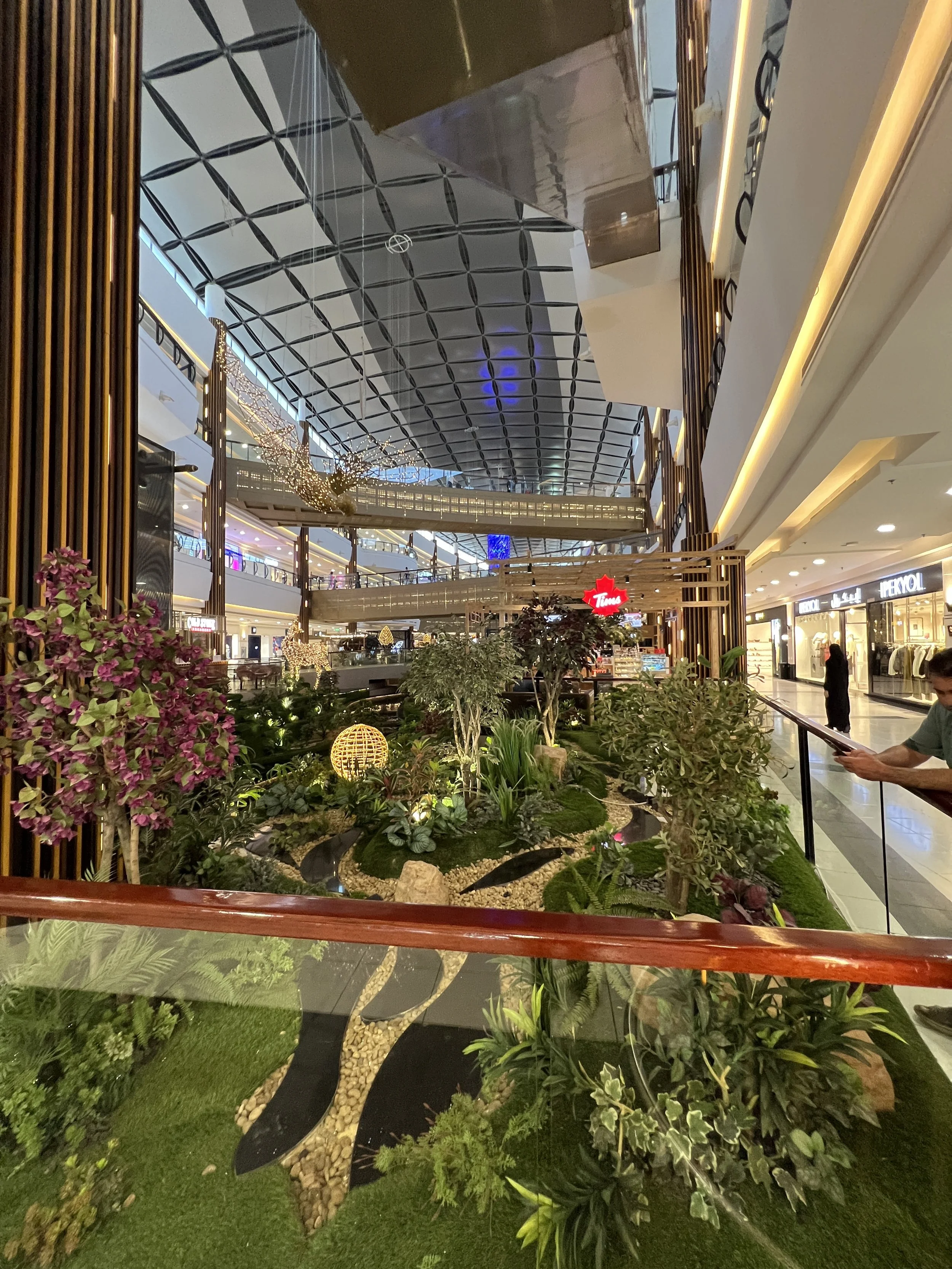Developing a desert (Saudi Arabia Part 1)
Recently I had the opportunity of travelling to the middle east. Of these countries, Saudi Arabia intrigued me the most. In 2016, the Saudi government launched the Saudi Vision 2030 government program. In line with this program, Saudi opened its borders to non-religious tourists for the first time in 2019. Given these recent events, I think that foreign knowledge of Saudi is still developing and I could explore the country with an untainted perspective and understand the challenges and prospects of a rapidly developing nation.
Infrastructure, Cityscape and National Development
The pictures above were taken in North Riyadh, towards the outskirts of the city. There is a lack of human density, a characteristic observed throughout the city. Perhaps the population prefers to be out at night. This district felt new as there was a high percentage of areas still under construction. There were clear class differences between residential housing.
I noticed that places seem to be very spread out, and that roads were very wide. While the roads were wide, they did not seem to have a corresponding level of traffic. You could argue that they were still developing the city and the wide roads were meant to support future growth. I think this is a challenge of urban planning. While large roads may be future proof, they are extremely inefficient and they discourage pedestrian travel. The road infrastructure in Riyadh favored cars. Given that Saudi is a producer of oil, this is not a surprise.
Another observation was that despite infrastructure like pedestrian or cycling paths, I felt like walking and cycling were not common. Given the weather and climate in Saudi, I am not sure if walking or cycling will ever be a common mode of transport.
Perhaps I was witnessing the early stages of city development. It would be interesting to come back and view the changes as the population density increases and the city develops. There is much anticipation. The success of these development projects also heavily depend on government planning and policy development. I witnessed a similar landscape in the south of ShenZhen (Shekou) in 2017, as the region was still growing rapidly. I was skeptical then as Malaysia had similar projects with rapidly developed infrastructure (see Iskandar Project). Simply building the right infrastructure does not attract people and economy. National development is a complex process.
As I ventured into the city, I saw more developments including the King Abdullah Financial District (KAFD). The financial district was definitely still a work in progress. I think it was important for Saudi to get external investors, especially those of the private sector. I do not have the information but I believe that such a project cannot be successful without private interest and evaluation. I think we can compare this to the development of the Marina Bay Financial Center (MBFC) in Singapore. The MBFC was a project aimed at achieving the same level of success as Canary Wharf or similar financial districts in Hong Kong and New York. The MBFC did not succeed from government injections alone. It sought significant private investment and leveraged on the success of the Raffles Place business district. I think we can compare the development of the financial district to the suburban areas mentioned earlier. There is a visible amount of oversupply.
Along with the financial district were miscellaneous observations such as as large parking lots similar to those seen in USA and ongoing major, visionary construction projects. I think that an over reliance on personal vehicles could be detrimental and make it difficult for the country to meet environmental objectives in the future. I also think it was interesting that the city was embarking on even bigger projects considering that the existing mega projects have not seen a good take up rate. Perhaps this is in response to the delays of establishing the KAFD. Saudi has an average annual population growth rate of 3% since 1990. Though this has slowed down in recent years, It is still much higher than the world population growth rate. This population growth rate is comparable to that of third world or developing countries. But Saudi differs from these countries as they are much wealthier and are able to compliment their growth in population with a similar growth in infrastructure.
I believe most countries start with the development of human capital and develop infrastructure after or at least in tandem. We take similar approaches in software and refactor and develop infrastructure as the need arises. While not necessarily efficient, Saudi’s approach allows it to achieve a much faster rate of growth.
Located near the KAFD is the King Abdulaziz City for Science and Technology (KACST). Most countries who wish to develop leading business hubs invest heavily in a startup ecosystem. The Garage was recently launched and aims at satisfying this need. Again, I would stress the importance of people in any developing economy. Without people and consumers, startups will have very few customers to cater to. In order for problems to emerge, people must start living. The introduction of an innovation ecosystem is also important for the development of human capital. The innovation hub is located close to the university. I do not have much information about the King Saud University, but I do believe that the publication of research papers and the registering of patents are key in order to raise the country’s prominence at the global stage as a leader in science and technology.
Taking a short break from the city, I visited the Al Bujairi Heritage Park. Meant to capture the history of Riyadh and Saudi Arabia, this location is essentially a gentrified tourist destination. I noticed much more activity here. The city comes to life at night. Perhaps this is also in response to the scorching day time temperatures (reaching up to 50°C in the summer).
The merry go round drew flashbacks from the merry go round at Fisherman’s Wharf in San Francisco. I did find alot of similarities between American and Saudi lifestyles. However, I’ll leave that for a separate post.
Moving further south, I noticed more signs of activity and movement. There was definitely more foot traffic in this area. I could tell that the area was more mature in general. The architecture in the area spread across generations and appeared less uniform. This was one of the first areas where I noticed operational public transport. I was also pleasantly surprised to see air conditioned bus stops - probably to battle the summer heat. I think an underground metro would be more suitable in this case and I do see underground stations being constructed.
The presence of cycling lanes were also comforting. However, I am unsure if these cycling lanes will receive the same amount of traffic as I’ve seen in European countries. I think it depends on factors of geography, culture, and economics in order for it to be widely utilized. My greatest takeaway is that the country has an abundance of space to work with. And it has tremendous opportunity in maximizing the value of this space.
The country certainly is in a growth phase, with growth in infrastructure leading the growth in population. Riyadh has also yet to receive a large population of foreigners, unlike Dubai. Whether this is desirable depends entirely on its government. However, we have seen numerous examples where opening up borders and encouraging Foreign Direct Investment significantly increases the economic development rate of the region.
I can see that Riyadh has a big vision and has plans for much bigger and rapid growth. It is currently playing catchup against Dubai but it definitely has the capital to grow. It battles an ongoing cultural shift as it attempts to balance the old and the new. It would be challenging to manage the conservative culture and religious views. I think that buildings and infrastructure alone cannot make a city great. Hopefully, this comes hand in hand with fundamentals such as healthcare and education. And to identify activities that allow people to live - music, sports, entertainment are all factors that contribute to a thriving city.



















